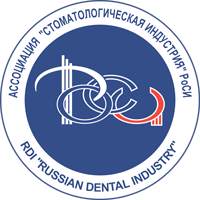DOI:
10.37988/1811-153X_2025_1_6Metagenome of the oral cavity in children who are relatively healthy and have acute herpetic stomatitis
Downloads
Abstract
Acute herpetic stomatitis (AHS) is the most common viral disease, accounting for about 90% of all diseases of the oral mucosa. The incidence of herpes infection is associated not only with the widespread prevalence of the virus, but also with the individual characteristics of the child. The quantitative and qualitative composition of microbial communities in the oral cavity makes a significant contribution to both the overall health of the child and his susceptibility to herpes infection. The aim of the study is to comparatively assess the composition of bacterial communities in the oral cavity of children aged 1.5 to 5 years, relatively healthy and with AHS, living in Kazan (Russia).Materials and methods.
Metagenomic analysis of dental plaque samples from 15 relatively healthy children and 15 children with AHS was carried out. Pre-processing and subsequent analysis of sequences were performed using the Mothur pipeline on the Galaxy platform. The functional profiles of dental plaque samples were assessed using the Global Mapper tool on the iVikodak platform.
Results.
Classification of operational taxonomic units (OTUs) resulted in a total of 294 OTUs with a similarity of 97%. Analysis of the structure of microbial plaque communities showed an increase in species diversity in sick children, with OTUs 1.5 times higher than in the healthy group. Bacillota, Pseudomonadota, and Bacteroidota were the dominant phyla in the plaque samples. In the dental plaque of children with AHS, the number of OTUs belonging to the phylum Pseudomonadota increased by 1.6 times, those belonging to the phylum Actinobacteriota by 1.5 times, and the number of bacteria belonging to the phyla Bacillota, Bacteroidota and Fusobacteriota decreased by 1.5, 1.2 and 2.4 times, respectively, compared to their number in healthy children. The number of genes responsible for certain functions in the bacterial community of dental plaque of children with AHS exceeded, on average, 1.15±0.39 times the number of genes in healthy children.
Conclusions.
Metagenomic analysis made it possible to obtain the possibility of extended taxonomic analysis based on sequencing of the 16S rRNA gene in patients with acute herpetic stomatitis and conditionally healthy children. Characteristic phylotypes were determined, individual representatives of microbiomes were identified and an analysis of the functionality of bacterial genes was carried out. A decrease (no more than twofold) in the number of bacteria of the genera Capnocytophaga and Fusobacterium in patients with acute herpes simplex virus infection, and an increase in representatives of the genera Prevotella, Bergeyella and Leptotrichia were registered. The number of bacterial genes mediating pathogenicity factors in sick children tended to increase compared to healthy children, however, due to the high variability of individual samples, a reliable excess was found only for whooping cough determinants.
Key words:
oral metagenome, conditionally healthy children, acute herpetic stomatitisFor Citation
[1]
Modina T.N., Giliazieva D.A., Mamaeva E.V., Khabibullin K.M., Akhmetzyanova R.I., Kurdy W., Yakovleva G.Yu., Ilinskaya O.N. Metagenome of the oral cavity in children who are relatively healthy and have acute herpetic stomatitis. Clinical Dentistry (Russia). 2025; 28 (1): 6—11. DOI: 10.37988/1811-153X_2025_1_6
References
- Schloss P.D., Westcott S.L., Ryabin T., Hall J.R., Hartmann M., Hollister E.B., Lesniewski R.A., Oakley B.B., Parks D.H., Robinson C.J., Sahl J.W., Stres B., Thallinger G.G., Van Horn D.J., Weber C.F. Introducing mothur: open-source, platform-independent, community-supported software for describing and comparing microbial communities. Appl Environ Microbiol. 2009; 75 (23): 7537—41. PMID: 19801464
- Afgan E., Baker D., Batut B., van den Beek M., Bouvier D., Cech M., Chilton J., Clements D., Coraor N., Grüning B.A., Guerler A., Hillman-Jackson J., Hiltemann S., Jalili V., Rasche H., Soranzo N., Goecks J., Taylor J., Nekrutenko A., Blankenberg D. The Galaxy platform for accessible, reproducible and collaborative biomedical analyses: 2018 update. Nucleic Acids Res. 2018; 46 (W1): W537—W544. PMID: 29790989
- Batut B., et al. Community-driven data analysis training for biology. Cell Syst. 2018; 6 (6): 752—758.e1. PMID: 29953864
- Caporaso J.G., Lauber C.L., Walters W.A., Berg-Lyons D., Lozupone C.A., Turnbaugh P.J., Fierer N., Knight R. Global patterns of 16S rRNA diversity at a depth of millions of sequences per sample. Proc Natl Acad Sci USA. 2011; 108 (Suppl 1): 4516—22. PMID: 20534432
- Quast C., Pruesse E., Yilmaz P., Gerken J., Schweer T., Yarza P., Peplies J., Glöckner F.O. The SILVA ribosomal RNA gene database project: improved data processing and web-based tools. Nucleic Acids Res. 2013; 41 (Database issue): D590—6. PMID: 23193283
- Nagpal S., Haque M.M., Singh R., Mande S.S. iVikodak-A platform and standard workflow for inferring, analyzing, comparing, and visualizing the functional potential of microbial communities. Front Microbiol. 2018; 9: 3336. PMID: 30692979
- Gross E.L., Beall C.J., Kutsch S.R., Firestone N.D., Leys E.J., Griffen A.L. Beyond Streptococcus mutans: dental caries onset linked to multiple species by 16S rRNA community analysis. PLoS One. 2012; 7 (10): e47722. PMID: 23091642
- Saganova T.R., Tsarev V.N., Gianni A.B., Signorini L., Cavallé E. The importance of Veillonella in the oral microbiome and its impact on dental and periodontal pathology: a literature review. Parodontologiya. 2023; 3: 218—226. DOI: 10.33925/1683-3759-2023-792
- Tsinekker D.T., Modina T.N., Khusainov I.H., Tsinekker D.A., Gribova Ya.V., Nabieva Z.I., Mamaeva E.V. Features of the oral microbiome in the association of periodontitis and candidiasis in the postcovid period. Clinical Dentistry (Russia). 2023; 3: 38—44 (In Russian). eLIBRARY ID: 54509006
Downloads
Received
July 30, 2024
Accepted
February 3, 2025
Published on
April 7, 2025









